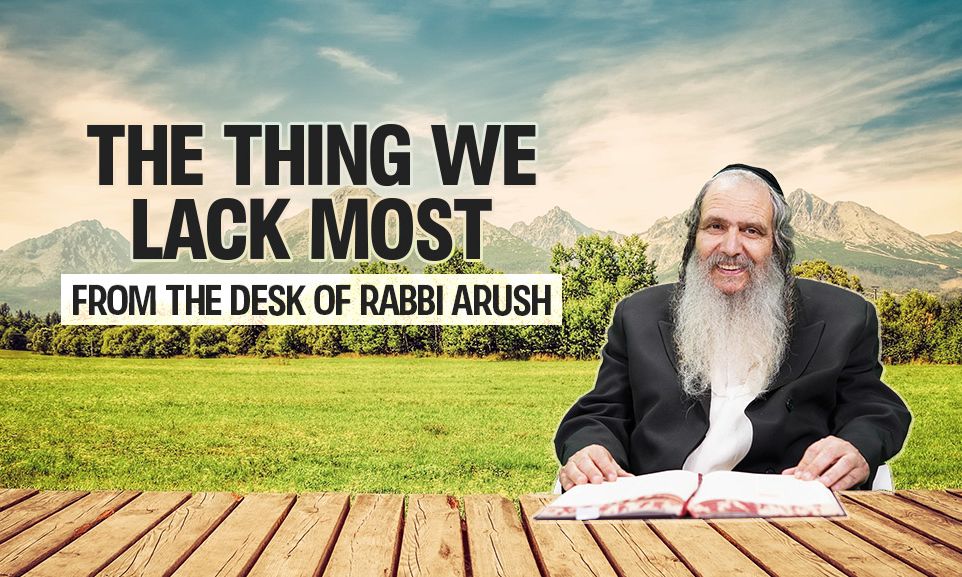
The Thing We Lack Most
The Temple is a reflection of the true Jewish home that brings its members closer to each other and closer to Hashem. This is why we desperately need the Beit HaMikdash today, in our world of darkness and distance from Hashem.

Translated from Rabbi Arush’s feature article in the weekly Chut shel Chessed newsletter. The articles focus on his main message: “Loving others as yourself” and emuna.
A Home is Not a Place Where You Live
When we say, “A Jewish home”, of course we do not mean the walls and the roof, the doors and the windows, the kitchen and the living room. And even if there is a mezuzah on the door and the kitchen is kosher and there is a large library of Jewish books in the living room – all these are certainly the external wrapping. They are not the essence of a Jewish home.
When we search for an essential definition, we must peel away the externals and look at the inside story. When we dive in, we discover that the Jewish home is a place of giving, developing one’s good characteristics, devotion, listening, love, and Shechina (Divine Presence). And so, really, a Jewish home is a place where husband and wife not only come closer to each other, but together come closer to Hashem yitbarach, and that is what increases the unity and connection between them.
The Torah speaks so much about the Mishkan (Tabernacle). And we pray so much for the building of the Beit Mikdash (Temple). Is that really what we lack in life?
Indeed, if the Beit Mikdash is just a wonderful, magnificent, and holy building – it doesn’t justify the prayers and the longing. No – there is a deeper, internal essence, and the purpose of the longing and the prayers is to connect to that essence.
To pray for the building of the Beit Mikdash, we must strive and work towards understanding the essence of the Mishkan, and then we will understand that it is really the most important thing in the life of each and every one of us – every day of our lives!
Discovering a Life Preserver
To understand this, we must take note of when Moshe Rabbeinu was commanded to build the Mishkan. After the Giving of the Torah, the Jewish people committed one of the most severe sins, Chet Ha’egel – the Sin of the Golden Calf. Hashem decreed that they ought to be destroyed. Moshe Rabbeinu prayed and annulled the decree, and immediately after his days of prayer, which end on Yom Kippur, Hashem commanded the Jews to build the Mishkan.
So, we see that the building of the Mishkan is closely connected to Hashem’s forgiving us for Chet Ha’egel. The Mishkan is the rectification of a state of sin. And we must understand: How does one annul a decree?
It is like this: Before Moshe Rabbeinu prayed, the reality was that Hashem gave the Jewish People mitzvot and chukim (laws) and they transgressed them. According to the simple view of law and justice, sinners must die.
But Moshe Rabbeinu managed to activate Hashem’s mercy. Hashem yitbarach never gives a human being an impossible task. He gives him laws and punishments on the one hand, and on the other hand He gives him a yetzer hara (evil inclination) that can overcome him easily, and therefore there is almost no righteous person in the world who does only good and doesn’t sin – so it must be that Hashem wants to have mercy on sinners.
Moshe Rabbeinu understood that Hashem’s will is really that the sinning soul, and the soul of man who is struggling here, with ups and downs, will have a way and some idea how to correct his deeds and improve himself. How to begin anew after every failure, how to rectify and come close to Hashem even in a reality of much yetzer hara and confusion, and even sins.
It is with this that Moshe Rabbeinu came and spoke in favor of the Jewish people. And that is why he demanded that Hashem reveal His mercy and indeed, Hashem revealed to him the Thirteen Middot of Mercy. And so, the whole way of how the world is run changed.
The revelation of Hashem’s mercy actually means forgiving and atoning for sins. When Hashem yitbarach forgave the Jewish people, He was, practically speaking, agreeing with Moshe Rabbeinu, and saying: “Indeed, you have acted according to My real will. You have managed to find out the pnimiyut (inner essence) of Hashem’s will in creation. And that is why I am giving you the Mishkan, because the Mishkan is the means of holding on during periods of Hiding of the Face and when there is an undertow that distances a person from emuna (faith) and kedusha (holiness).” Hashem yitbarach wants people to have a way to rescue themselves in this world.
And the Mishkan, and, afterwards, the Beit Mikdash are the means of rescue! The way to stay faithful to Hashem even in a reality of a powerful yetzer hara that threatens to take over. This is the great revelation that Moshe Rabbeinu revealed to the Jewish people.
The House of Teshuvah and Prayer
That is why offerings were brought in the Beit Mikdash after sinning. And the main parts of the offerings were confession and teshuvah (repentance). Beit Hamikdash was truly a “factory” for producing teshuvah. It was not only a place where people did teshuvah, but a place that caused people to do teshuvah because the Shechina rested there. In other words, there was a very strong sense of Hashem’s Presence, which in itself caused the sinner to awaken to teshuvah.
And that is why when, in the Pesach Haggadah, we count all the good things that Hashem did for us since leaving Egypt, the greatest one is “And He built for us the Beit Habechira, to atone for all our sins.” Of course, this does not mean that one can sin and the Beit Hamikdash will atone, chas vechalila, but rather that the Beit Hamikdash was what helped the sinners to do teshuvah and helped every Jew not to sin anymore.
Also, the Shechina itself that rested in the Mishkan caused those who had forgotten Hashem because of the wearing routine and the hiddenness in this world – to come close once more and remember emuna, their soul’s desire to unite with its Source. And that is really the meaning of the other korbanot (offerings, sacrifices) – olah, shelamim, and korban toda – coming from the word kirva, closeness to Hashem.
So, we see that a Jew who came to the Beit Mikdash was completely awakened from his spiritual slumber. If he had sinned, he would be awakened to do teshuvah; and if he was overly attracted by material desires, he was given a good shake, and would begin to sense the nothingness of this world compared to the spiritual world. And if he came there sunk in spiritual slumber and disconnected from emuna, he awakened from his sleep and renewed himself regarding emuna and his connection with Hashem, the Torah and mitzvot.
That is the essence of prayer, because prayer is connecting to Hashem. In prayer there is gratitude and emuna, teshuvah, and confessions. And so, it is said about the Beit Hamikdash “For My house will be called a house of prayer.”
Closer to You Than You Think
And that is exactly what we do during hitbodedut. Due to our many sins, we have no Beit Mikdash. But for someone who has da’at (understanding), it is as if the Beit Hamikdash was built in his lifetime. The true tzaddikim, the disciples of Moshe Rabbeinu, continue to beg for mercy from Hashem for the Jewish People, and continue to claim that the Jews need a spiritual tool that will help them survive in such a material, misleading, and attractive world. They give us advice that is like the Beit Mikdash – for even now, when we don’t have a physical Beit Mikdash, we still have the daat and the way and the advice needed to hold on within all the hiddenness and to draw closer to Hashem despite the big yetzer hara.
And so, we need the Beit Mikdash particularly now, when the hiding of Hashem is so great, and falsehood is so powerful – it is we who need the Beit Mikdash more than anything else. And if, due to our sins, the Beit Mikdash is in ruins, still, its essence and kedusha and its main goal are alive and well, and anyone can bring upon himself all the rectifications that took place when the Beit Mikdash existed by doing hitbodedut every day, doing teshuvah every day, and by taking account and awakening himself and praying much to Hashem that He should protect him in the future and help him overcome his base desires and urges.
This explains why Rabbi Nachman of Breslev says that the main work of the Jew is to get up at midnight and mourn the destruction of the Temple. You might ask, why? You would think that the main task of the Jew is to learn the laws, the Shulchan Aruch, and observe them all, whether seemingly trivial or important.
But to observe the mitzvot of the Torah properly, we need the Beit Mikdash, because the yetzer hara overcomes one all the time and undermines all the tenets of Judaism, be it emuna, brit – mainly the eyes – or speech and baseless hatred. The main way to observe the entire Torah truly is to be connected to the inner essence of the Beit Mikdash, which is teshuvah, tefillah (prayer), and toda (gratitude).
When a Jew yearns for the Beit Mikdash, he brings upon himself the kedusha of the Beit Mikdash – really. As Chazal say, “Anyone who mourns for Jerusalem merits and sees its joy.” Not in the future tense, but in the present tense. He is already living in a reality that includes the Beit Mikdash; in other words, he has the ability to remain connected to Hashem even if the reality is one of yetzer hara and hiddenness. And even after he sins, he has what he needs to awaken him and help him do teshuvah.
May Hashem draw all Jews to the wonderful daat of the tefilla, and in that merit we will witness the building of the Beit Mikdash and the resting of the Shechina upon it, in reality, speedily, in our days, Amen.





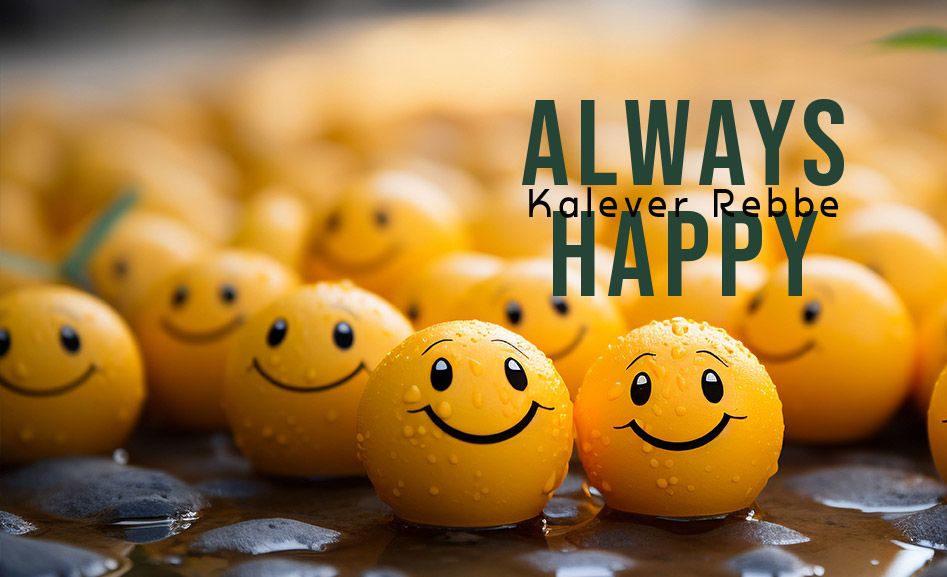
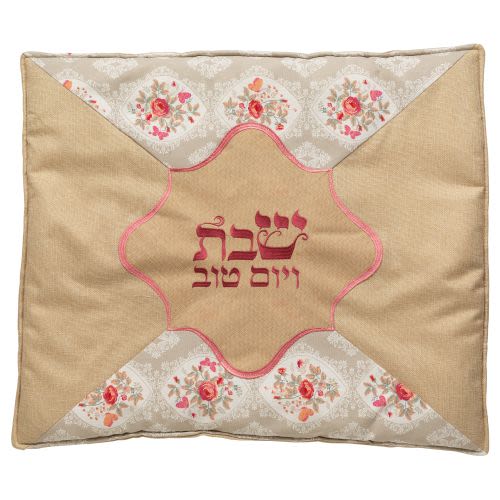
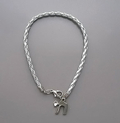


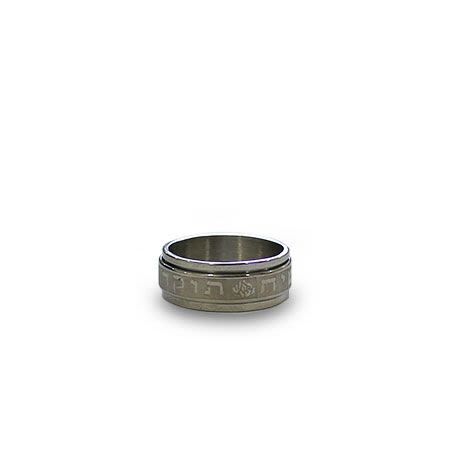
3/01/2024
I was just in Israel,working in the fields with Israel Food Rescue, and when we were in Jerusalem, and walked to the western wall, what a big event that was. I so long for the temple to be rebuilt. Hashem is so present in the holy city of Jerusalem.
Hashem Bless You
Bonnie from Canada